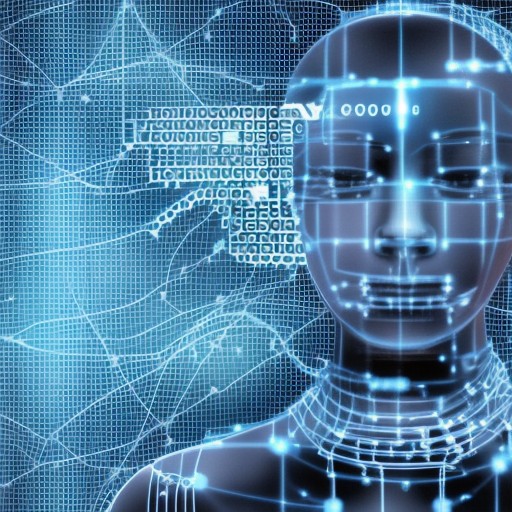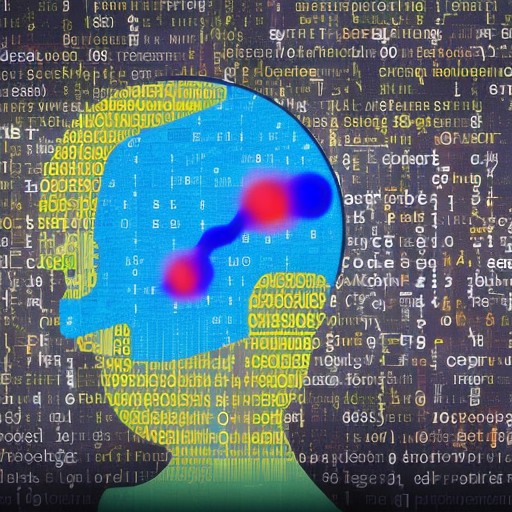Introduction to Machine Learning
Chances are, you've heard of artificial intelligence (AI) and machine learning (ML). But what exactly are they? In short, artificial intelligence is a broad umbrella term that refers to any computer system that can perform complex tasks that normally require human intelligence, such as visual perception, natural language processing, and decision-making. ML is a subset of AI that deals with the construction of machine learning models and the study of machine learning algorithms that can learn from and make predictions on data. In other words, machine learning is a computer's ability to automatically improve its performance on a task by learning from experience. So, machine learning is a type of artificial intelligence that allows computers to learn from data without being explicitly programmed. This makes it a powerful tool for a variety of industries and in a variety of business operations or workflows.

Machine Learning: Learns From Data Without Being Programmed
AI and machine learning are often used interchangeably, but they are two different fields. Artificial intelligence is a broader concept that refers to any technology that enables computers to perform tasks that would normally require human intelligence. This can include anything from simple pattern recognition to more complex decision-making. Machine learning, on the other hand, is a specific type of AI that allows computers to learn from data. By having data scientists feed a computer a large number of data points, it can learn to recognize patterns and make predictions. This is a powerful tool that is being used in a variety of industries, from retail to healthcare. As data becomes increasingly accessible, machine learning will become more important in helping us make sense of it all.
So, How Does Machine Learning Work?
Essentially, a machine learning algorithm takes a dataset as input and tries to find patterns in the data. The algorithm then makes predictions based on these discovered patterns. The goal of machine learning then is to learn relationships and patterns from the data so that the computer can automatically apply these learned patterns to new data thus improving the accuracy of these predictions over time. It accomplishes this by increasing the amount and variety of data that is used for training the algorithm or machine learning model. This process of using data to train a machine learning algorithm is known as "supervised learning."
Supervised learning
Supervised machine learning algorithms are used when the training data includes labeled data or targets. In other words, we already know the right answers, and we're trying to get the computer to learn how to reach the right answers by itself. There are two main types of supervised machine learning algorithms: classification algorithms and regression algorithms. Classification algorithms are used to predict categorical variables, such as whether a patient has cancer or not. Logistic regression or linear regression algorithms are used to predict continuous variables, such as a patient's lifespan.
Unsupervised learning
In addition to supervised machine learning, there is also a type of machine learning known as "unsupervised machine learning." Unsupervised algorithms are used when the training data does not include labels. The computer is given unlabeled data and must find structure in this data itself to make predictions or decisions. Unsupervised machine learning algorithms do not require labeled training data; instead, they try to find hidden patterns or groupings in the data. One popular unsupervised machine learning algorithm is known as k-means clustering. Clustering algorithms are often used for customer segmentation applications.
Reinforcement learning
Finally, there are reinforcement learning algorithms that are used when an agent interacts with its environment by performing actions and observing rewards. The agent's goal is to learn how to choose actions that maximize long-term rewards. Reinforcement learning is a type of AI that allows machines to learn from data. Unlike other forms of artificial intelligence, reinforcement learning is not based on pre-programmed rules. Instead, it uses a trial-and-error approach to learn from data. This makes it well-suited for tasks that are difficult to construct a computer program, such as playing certain games or controlling robotic arms. Reinforcement learning is also different from other machine learning methods in that it takes into account the consequences of its actions. This allows it to optimize its behavior over time to achieve a specific goal.
Machine Learning: Powering Critical Workflows
AI and machine learning are increasingly being used to power many critical workflows in a variety of business operations and industries. From the retail industry to the healthcare industry, AI is being used to help organizations automate and streamline their business operations. In the retail industry, AI is being used to help businesses personalize the shopping experience for customers and recommend products they may be interested in. In the healthcare industry, AI is being used to create predictive models that can help identify patients at risk for certain conditions and diseases. AI is also being used to develop new treatments for cancer and other diseases. Machine learning is also being used to create autonomous vehicles, which are expected to revolutionize transportation. With so many different applications, it's clear that machine learning systems are changing the way we live and work.
Healthcare: Develop New Treatments, Diagnose Patients, Predict Patient Outcomes
The healthcare industry is increasingly turning to machine learning technology to help develop new treatments for diseases, diagnose patients, and predict patient outcomes. Machine learning focuses on analyzing historical data to identify patterns and make predictions. In the healthcare context, machine learning programs can be used to identify new drug targets, customize treatment plans for individual patients, and predict which patients are at risk for certain conditions. Machine learning is already having a major impact on healthcare, and its use is only likely to grow in the future.

Finance: Prevent Fraud, Detect Money Laundering, Make Stock Predictions
Artificial intelligence and machine learning are being used more and more in the financial sector for a variety of purposes. One application is fraud detection. AI can help to detect fraudulent activities by analyzing patterns in data or performing anomaly detection. For example, if there is a sudden surge in activity from a certain account, AI can flag this as suspicious and investigate further. AI is also being used to detect money laundering. By looking for patterns that may indicate criminal activity, financial institutions can then take appropriate measures to prevent these activities from taking place. Finally, AI is also being used to make stock predictions. By analyzing historical data, AI can identify patterns that may indicate future trends. This information can be used to make investment decisions. As AI becomes more sophisticated, it will play an even bigger role in the financial sector.

Manufacturing: Optimize Production Processes, Improve Quality Control
AI and machine learning models are increasingly being used in the manufacturing industry to optimize production processes and improve quality control. By analyzing data collected from sensors and devices, AI can identify inefficiencies and potential issues, such as component failures. AI can also be used to develop predictive maintenance models that can prevent downtime and improve overall equipment efficiency. In addition, machine learning is being used to create virtual twins of production lines, which can be used to test new processes and make adjustments before implementation. This helps to reduce the risk of errors and disruptions during production. As AI and machine learning become more advanced, they will continue to play a vital role in improving the efficiency of the manufacturing industry.

Conclusion
As you can see, machine learning is a powerful tool that can be used for a variety of purposes. Machine learning algorithms are increasingly being used across all sectors as organizations seek to automate repetitive tasks and optimize their business processes. Some common examples of machine learning applications include:
- Automatically tagging images with labels;
- Fraud detection;
- Optimizing website content for search engines;
- Recommending items to users; and
- Identifying spam emails.
Machine learning technology is constantly evolving and becoming more sophisticated. As it becomes more advanced, it will be able to do even more amazing things. In the future, machine learning will be used to develop new treatments for diseases, diagnose patients with greater accuracy, prevent fraud, detect money laundering, and make stock predictions. It will also be used to optimize production processes and improve quality control in the manufacturing industry. With its many potential applications, machine learning is sure to have a profound impact on our lives and economy.
In addition, machine learning systems are already having a major impact in industries such as healthcare, finance, and manufacturing. And this is just the beginning. The potential applications of machine learning are virtually limitless. If you're interested in learning more about machine learning, there are many resources available online, including articles, tutorials, courses, and libraries.
FAQs:
What is machine learning?
Machine learning is a process of teaching computers to learn from data without being explicitly programmed. It involves using algorithms to analyze data, identify patterns, and make predictions. Machine learning can be used in a variety of applications and for a variety of purposes, such as self-driving cars, processing sensor data, fraud prevention, money laundering detection, and stock prediction.
How does machine learning work?
Machine learning algorithms analyze data to identify patterns and then make predictions based on those patterns. The algorithms are "trained" on a set of data, which allows them to learn how to recognize specific patterns. Once the algorithms have been trained, these machine-learning models can be used to predict outcomes for new data sets.
What are the different types of machine learning?
There are different types of machine learning, including supervised learning, unsupervised learning, and reinforcement learning. Supervised learning algorithms are given a set of training data, and they learn by looking for patterns in the data. Unsupervised learning algorithms are not given any training data; instead, they learn by grouping similar input data together. Reinforcement learning algorithms learn by trial and error and then receive rewards for correct actions and punishments for incorrect actions. AI and machine learning are powerful tools that can be used to solve many different types of problems.
What is a neural network?
An artificial neural network is a type of artificial intelligence that mimics the way the human brain processes information. Artificial neural networks are composed of a large number of interconnected processing nodes, or neurons, that work together to solve problems. These artificial neural networks are trained using a process known as machine learning. This involves feeding the neural network large amounts of data and allowing it to learn from the patterns that emerge. Once this deep neural network has been trained, it can then be used to make predictions or decisions based on new data. Thanks to their ability to learn and adapt, neural networks have become increasingly popular in a wide range of fields, from finance to healthcare.
What are some machine learning interview questions?
When interviewing for a position in machine learning or as a data scientist, there are a few key questions that you can expect to be asked. First, you will likely be asked about your experience with artificial intelligence and machine learning. The interviewer will want to know what projects you have worked on in the past and what you have found to be the most challenging aspects of these technologies. Additionally, you will be asked about your approach to classifying data and perhaps views on data security, The interviewer will want to know how you go about collecting and analyzing data, as well as how you use sample data to train machine learning models. Finally, you may be asked about a specific machine-learning algorithm or technique like linear regression, semi-supervised learning, or other statistical methods. The interviewer will want to gauge your understanding of the topic and see if you would be able to apply it to a real-world problem. By asking these types of questions, the interviewer will get a better sense of your skills and experience in the field of machine learning.
References:
- Machine learning interview preparation — ML algorithms,
https://medium.com/artificialis/machine-learning-interview-preparation-ml-algorithms-1e1eba78194c - What is (Quantum) Machine Learning?
https://so.ilitchbusiness.wayne.edu/knowledge/what-is-machine-learning - Artificial Intelligence
https://so.ilitchbusiness.wayne.edu/knowledge/artificial-intelligence - Machine learning interview preparation,
https://medium.com/artificialis/machine-learning-interview-preparation-intro-66f9722b7b56 - What is Machine Learning:
https://www.youtube.com/watch?v=9gGnTQTYNaE

